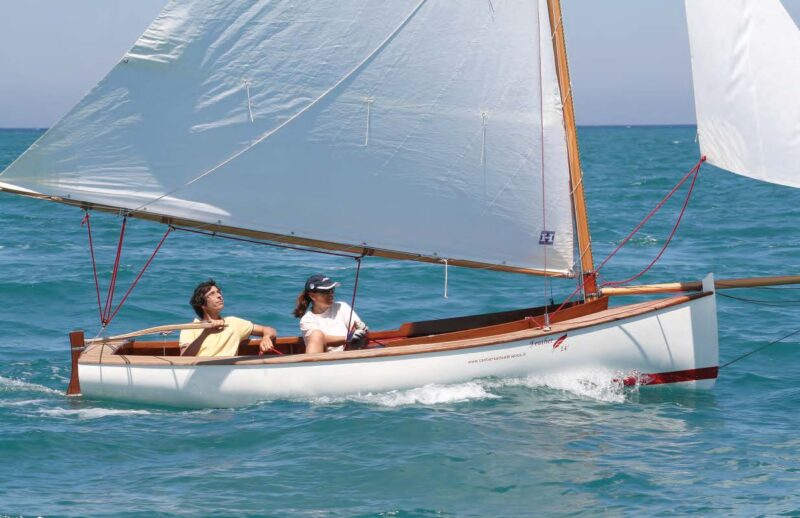 PAOLO MACCIONE
PAOLO MACCIONEDrawing on a wide variety of influences, among them American racing sandbaggers and local traditional raceboats, Federico Lenardon developed a fast daysailer for the waters of Trieste, Italy.
The history of cities on the Adriatic Sea such as Trieste, Italy—or any city on this ancient waterway—is hard for an American to comprehend. Even the rich recent history of yachting in the region has been shaped by hundreds of years of practical on-the-water experience.
During a recent trip to the northern Adriatic, I had the opportunity to meet Federico Lenardon, a designer from Trieste who not only embodies this history but helps to shape it. He shared with me the story of one of his designs, the Feather 14, an ultralight, cold-molded skiff with roots going back into the heart of the Adriatic Islands and the legacy of the captains from the Croatian archipelago.
I met Federico in the Yacht Club Adriaco, where he keeps the Feather. The walls were adorned with maps and images dating back to the Hapsburg Monarchy. They showed names of islands in a dialect no longer used and etchings of harbors along the Adriatic archipelago filled with sailing vessels of every variety.
The south side of the ancient stone pier was reserved for wooden boats, where they are best protected from the “Bora,” a strong and gusty wind that blows from the north. Along this side of the pier, there were many perfectly maintained wooden yachts up to 50′ long, several of them from the board of the famous Italian designer Carlo Sciarelli, who was born in Trieste.
Sciarelli, with whom Federico had apprenticed, was a master designer whose yachts were not only renowned for winning regattas but also for a unique aesthetic informed by form and fluid lines rather than following the wave-form theory that was emerging in his day.
Sciarelli saw the same utility for speed in some local boats in the Adriatic, basing some of his first designs on the Passera from Mali Losinj, which was home to many captains who sailed the world on merchant vessels during the age of sail. As the story goes, when these captains returned home, they asked the local builders to build a small boat similar to the styles they had seen in their travels. The result was a magnificent sailing boat with a heart-shaped transom, a shape likely borrowed from similar transoms found in many American boats. Federico recognized this, and by exploring the roots of the Passera he became enamored with many aspects of American traditional small-craft design, especially the works of historian Howard I. Chapelle.
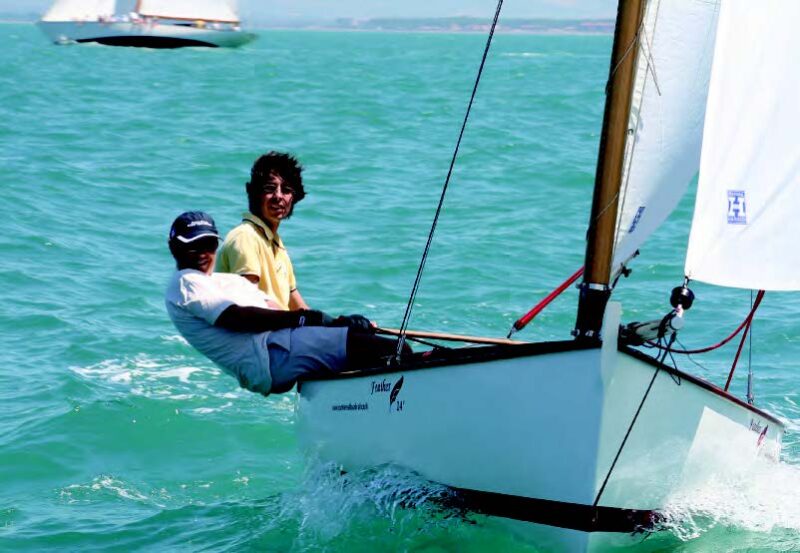 PAOLO MACCIONE
PAOLO MACCIONEThe Feather 14’s broad, low-freeboard hull relying on crew weight to stay upright is reminiscent of sandbaggers, in which crew transferred sandbags from one side of the boat to the other during tacks to keep the boat on its feet (see WoodenBoat Nos. 135 and 118).
In the Feather, not only the technical aspects but the traditional details were rich in variation and utility. Each part and portion of the Feather came with a story. As Federico described it, each was a “quote” from a boat, a builder, a design, or an era that became a particular inspiration for him.
“When designing the prototype for the Feather, I wanted to ‘quote’ these sources,” Federico said. “Similar to how an author incorporates references into a work. I was inspired by these elements, and I wanted to include them in my design.”
There are several such elements throughout the boat. However, the initial inspiration did not come from a design, but from artist Winslow Homer’s famous 1875 painting Breezing Up, showing a catboat under sail. Federico said this painting started the creative direction for the project and allowed him to incorporate elements from his favorite types—the Passera of local renown and 19th-century American sandbaggers from Chapelle’s drawings. He said his intention was to design a broad and shallow boat with a fine underbody. These characteristics are similar to many of the boats from the islands, but for Federico this type also marks a departure from the influences of Sciarelli, who has been noted for designing boats that cut through the water rather than planing.
One of the first elements he incorporated was the transom. “This is a quote from Passera, extending just a bit deeper than the sandbagger or catboat,” Federico said. The heart-shaped transom of the sailing Passera disappeared as the type evolved to accommodate marine engines, which required great bearing surface aft to keep the boat from squatting. The earlier sailing boats of the type had a transom that seemed to define its ability as a fast and able sailing vessel.
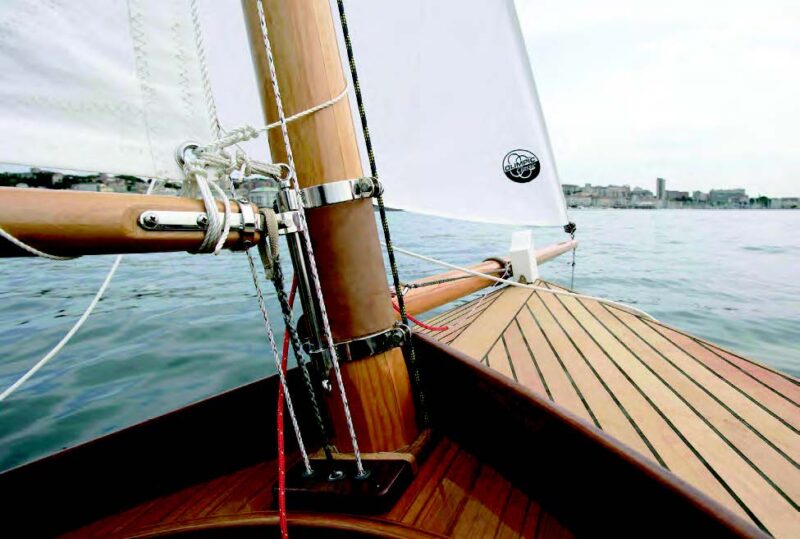 FRANCO PACE
FRANCO PACEHalyards are led through deck-level fairleads, and the rigging fittings are distinctly modern. Yet, with its bowsprit offset to reeve through a stemhead fitting and with its sliding-gunter rig, the Feather 14 clearly pays homage to tradition.
The boat’s sectional shape amidships is a quote from sandbaggers, broad, shallow centerboard racing craft so named for their use of sandbags as shifting ballast. “I used this shape but flattened it just a bit,” compared to the 15°-deadrise in sandbaggers. During tank tests of a prototype model, he was impressed how the combination of these elements in the hull design affected wave shape. “It does not have a deep wave at hull speed like other boats.” He also pointed this out in pictures, and the wave seemed almost flat.
Federico also used quotes in the details. One boat that has been very influential in his life is BAT, an English cutter built in 1885. This was Sciarelli’s boat, and Federico was working on the restoration when he caught Sciarelli’s eye and subsequently became the designer’s apprentice. He used several elements from the English style, including the cutaway forefoot and some rigging elements, including a topping lift that wraps under the boom.
The rig is also a quote from Passera, a sliding-gunter mainsail that originated in the Portuguese tradition. This enabled a comparatively large sail plan using spars that will still fit inside the boat for trailering. Having a high-aspect rig also allows for this ultralight boat to sail on the commonly light winds of the Gulf of Trieste.
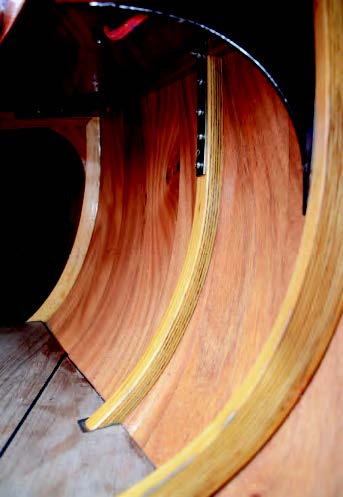 JAMES BENDER
JAMES BENDERPlywood knees attached to minimal laminated frames support the side decks and coaming. A through-deck chainplate on each side attaches to the inboard face of a frame, enabling good jib sheeting angles and keeping the topsides clear of fittings.
During my visit the Bora was screaming down the mountainside and rattling the rigging of all the boats moored at the club. It was difficult for me to envision a calm Gulf of Trieste. One of the most famous maritime events in the region is the Barcolana, in which hundreds of boats sail together in a race that has said to have over 2,000 participants. The locals say that in the Barcolana, it is common to have either too much wind or none at all. The Feather 14 is ideally suited to these conditions and can sail circles around other boats in the light air common to the Gulf of Trieste in the summer.
The boat, 14′ LOA, weighs just 320 lbs, including spars and sails. The hull is built using cold-molded construction, using three 1.5mm (3⁄32″) layers of mahogany veneers, making the planking thickness 4.5 mm, or just over 1⁄4″. The construction is of the highest quality, as one may expect of Italian craftsmanship. The bright spruce spars make a nice contrast to the traditional white hull. They are light and hollow, with the mast weighing in just over 10 lbs. With a total sparred length of 18′ 6″, the rig provides enough power to glide across the water in the least of breezes.
As the wind increases, there are many ways to shorten sail. “In 15 to 18 knots, the first reef in the main is a good idea, also it would be good to have three people in the boat,” Federico said, with a combined crew weight of about 500 lbs. “With a crew of three, you can sail in just about anything and it balances well with reefed main and no jib.”
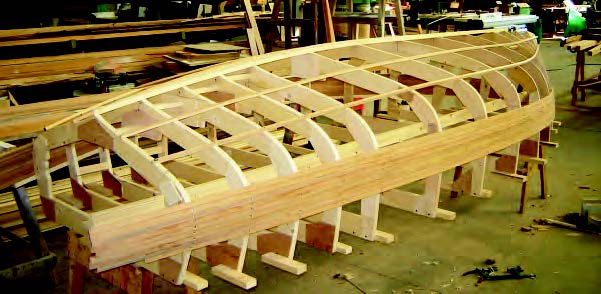 COURTESY OF CANTIERE ALTO ADRIATICO
COURTESY OF CANTIERE ALTO ADRIATICOTo build the Feather 14 hull, first a strip-planked mold was constructed, over which three layers of mahogany veneer were cold-molded, using epoxy.
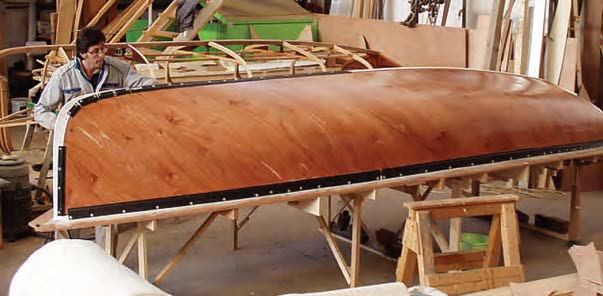 COURTESY OF CANTIERE ALTO ADRIATICO
COURTESY OF CANTIERE ALTO ADRIATICOThe monocoque construction makes the boat light and fast.
The boat handles superbly. One particularly interesting characteristic is how well it tracks. You can completely let go of the tiller at almost every point of sail and the boat tracks like a full-keel cruiser, aided by a rudder and daggerboard shaped to modern foil cross-sectional shapes. This can be a great attribute when sailing shorthanded or when leaving the helm briefly.
Federico describes the Feather as a modern boat with a traditional heart. He used the design tools that had been given to him by Sciarelli, which enabled him to “feel” the lines as they were laid down on paper. Then, he transferred them to computer to develop templates for pieces to be shaped by computer numerically controlled cutting for use in laminations.
With Federico, the discussion gave light to many expressions that we normally wouldn’t use in English, but somehow fit superbly. In addition to quoting inspiring vessels and the “tailoring of the craft,” he spoke of a design element that has become his signature in boats design, the “bird’s back hand.” “It is a curve that aligns with the trailing edge of a bird’s wing,” he said. Characteristic of the shape and style of the Feather, the composite curve of is the perfect metaphor for the boat: two curves combining to form one shape. In the Feather, this is a combination of American and Adriatic elements, an ultralight boat that can be sailed in adverse conditions and a modern construction incorporating traditional design. It is possible that other designers will be quoting Federico for generations to come.
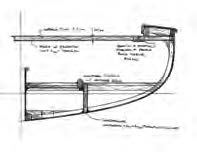 FEDERICO LENARDON
FEDERICO LENARDONParticulars:
LOA 14’3″
LWL 14′
Beam 5’6″
Draft
board up 6″
board down 4’3″
Sail area 170 sq ft
Displacement 320 lbs
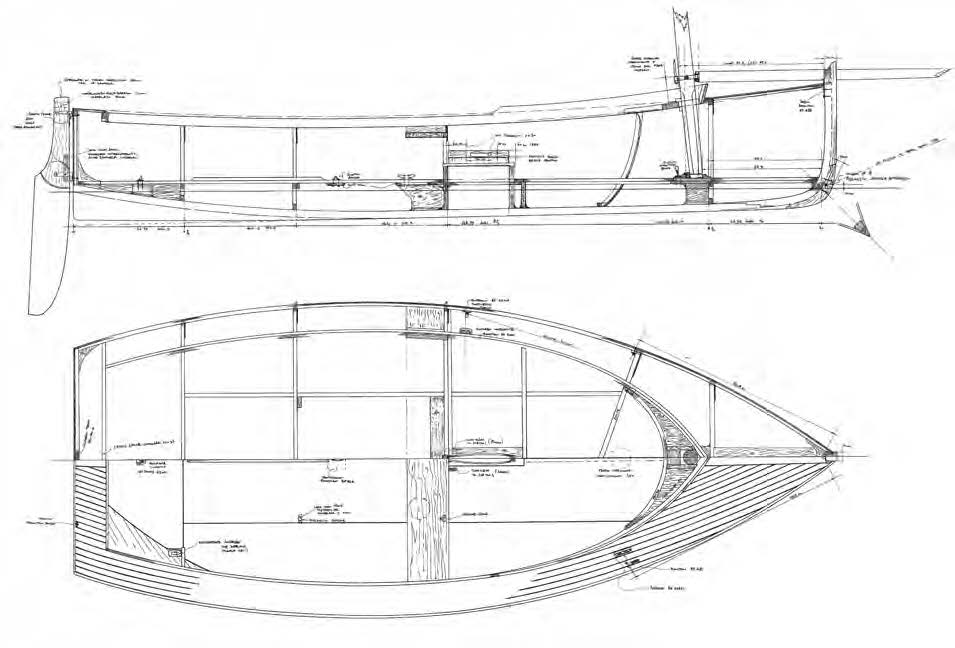 FEDERICO LENARDON
FEDERICO LENARDONFor information about the Feather 14 see the Frederico Lenardon website.
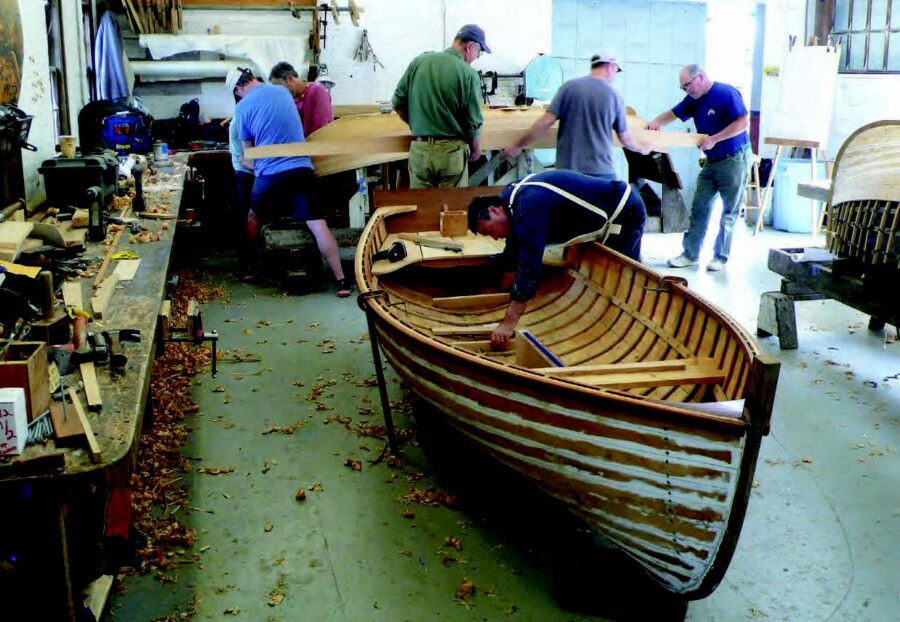
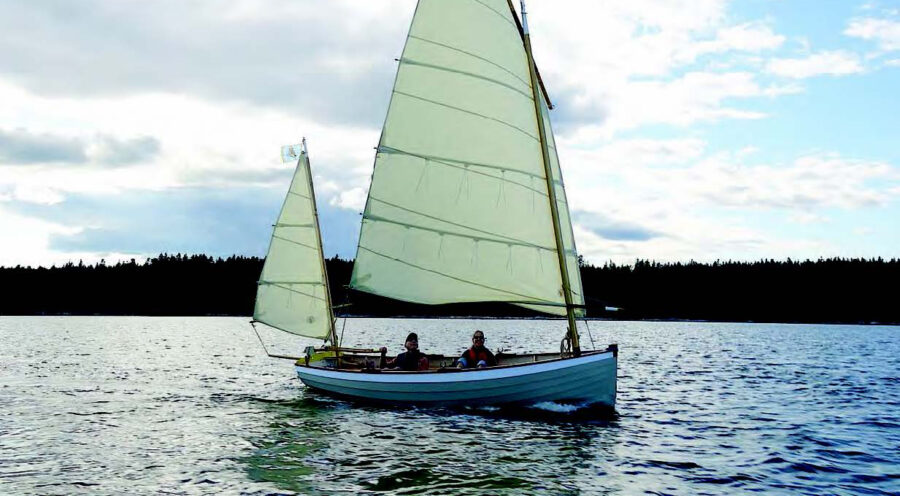
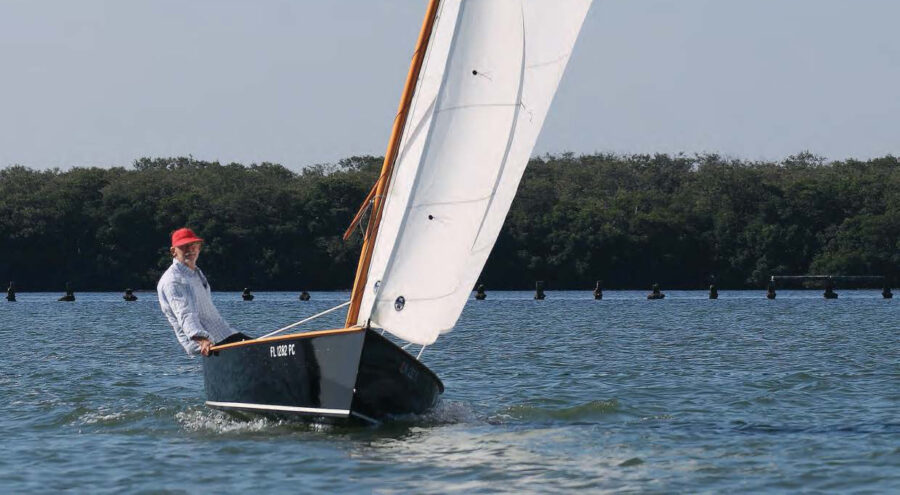
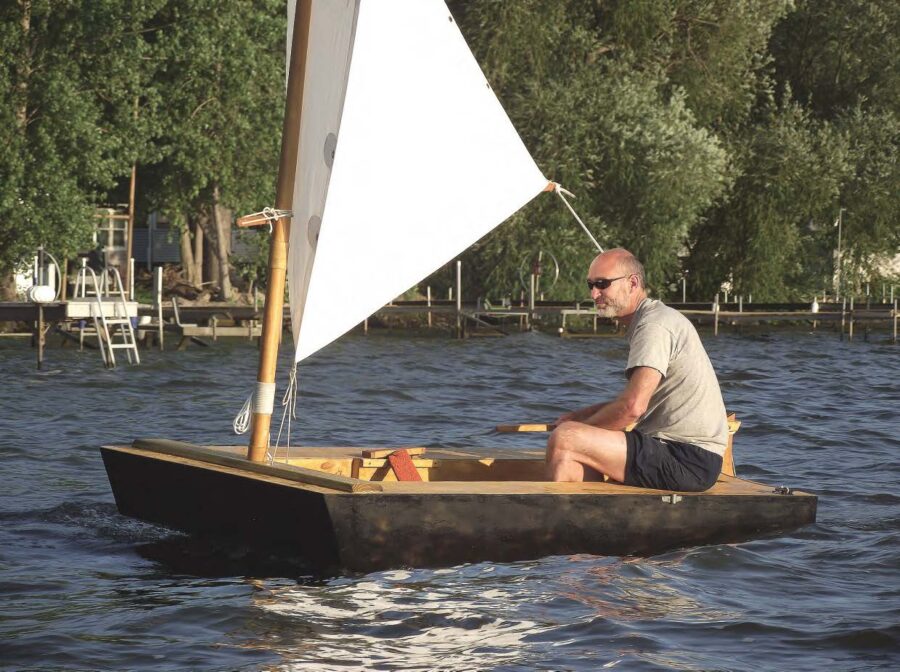
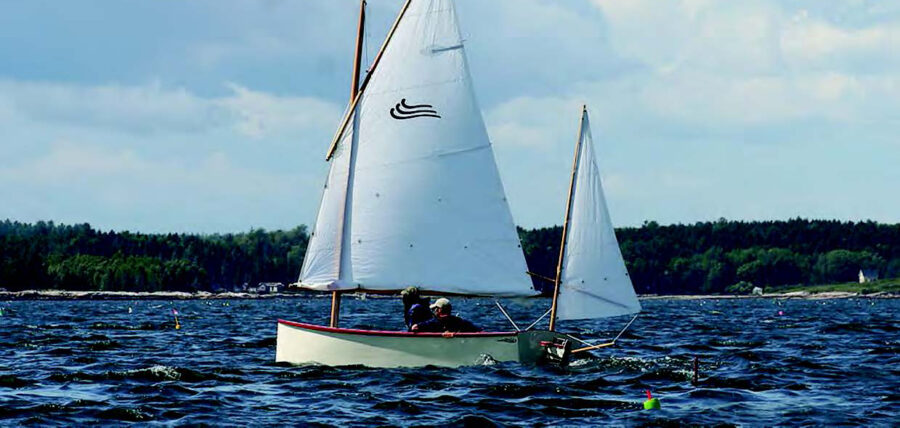
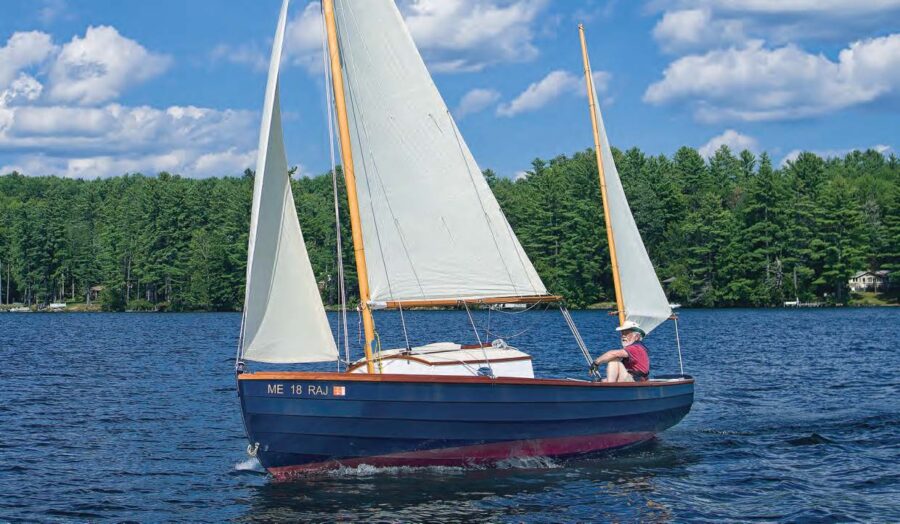
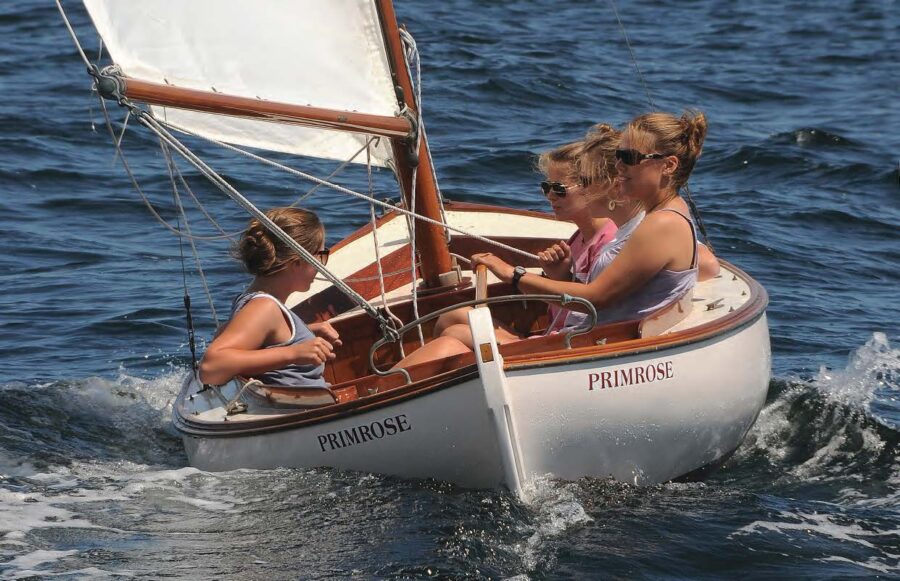
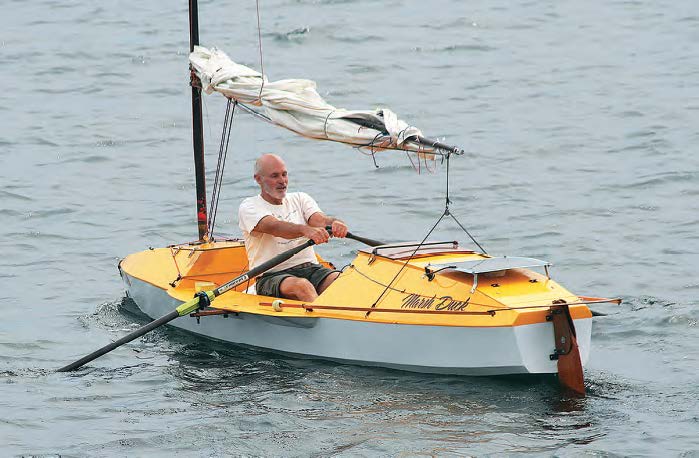
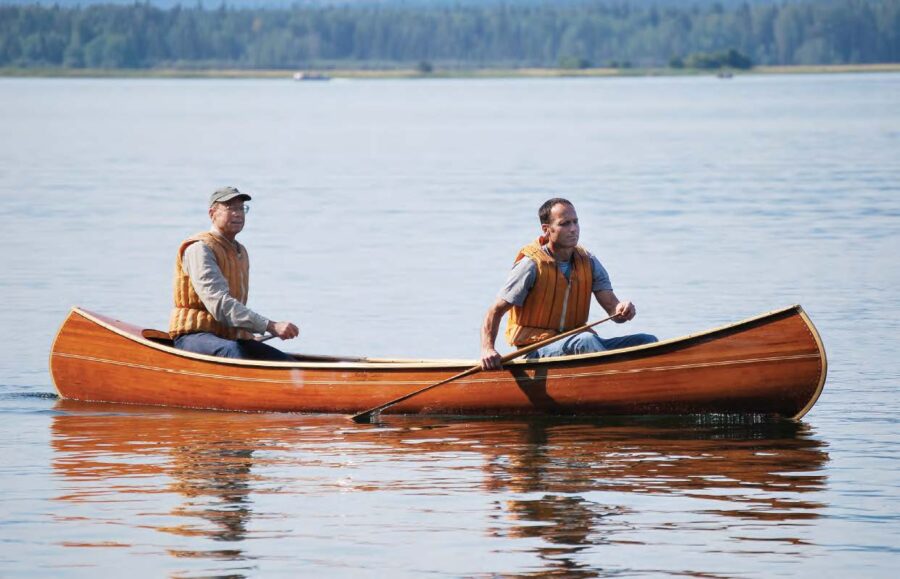
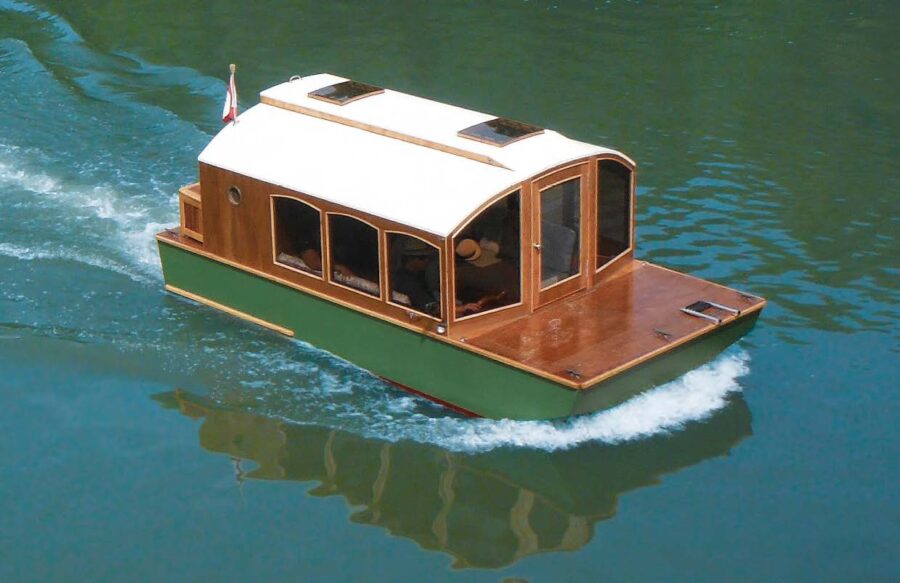
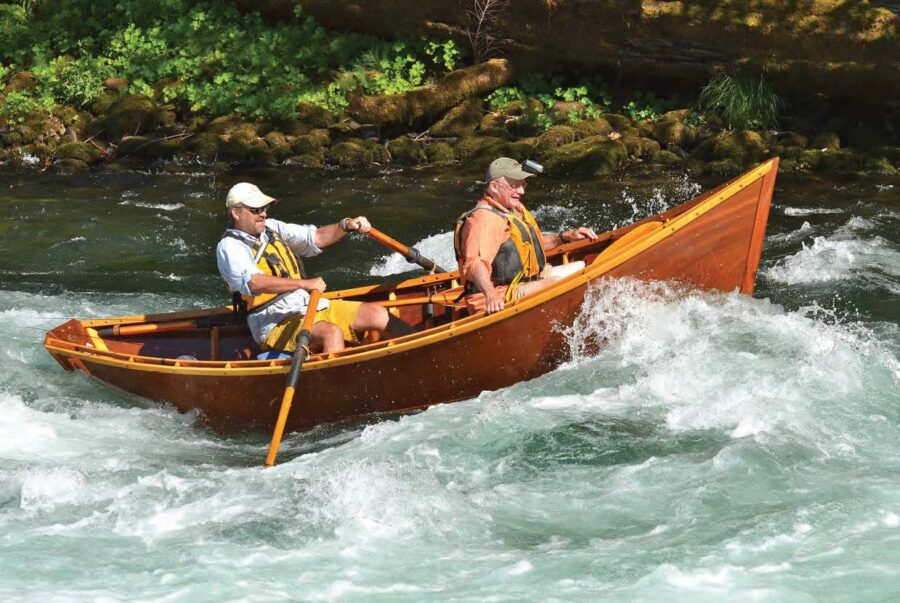
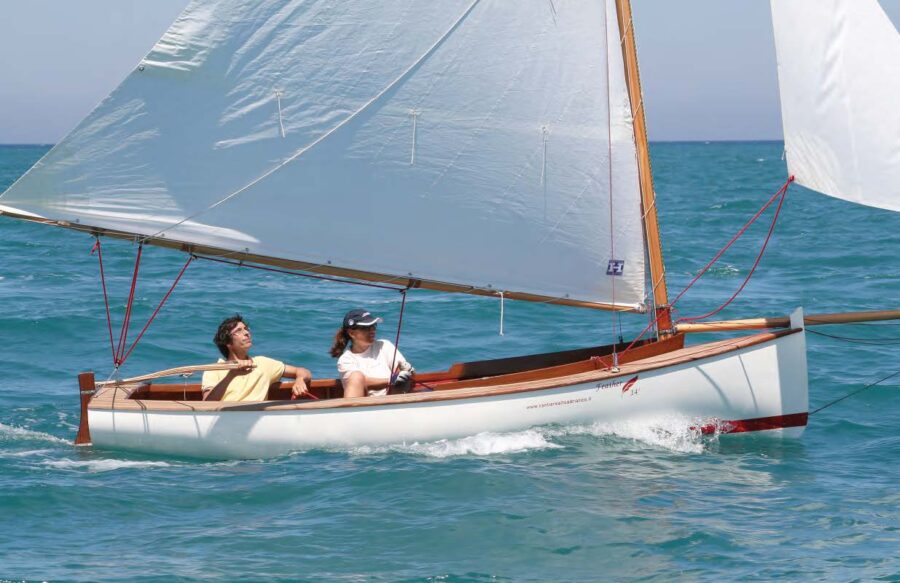
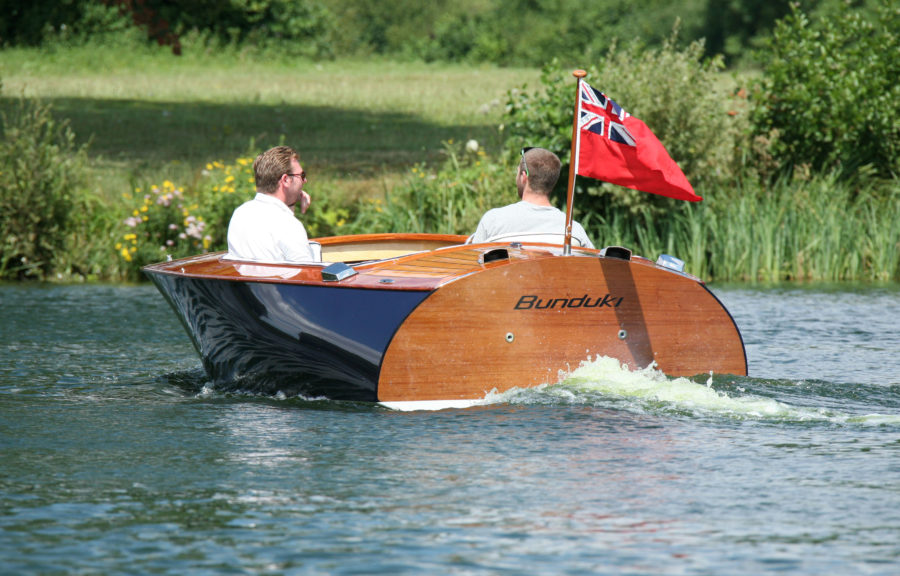
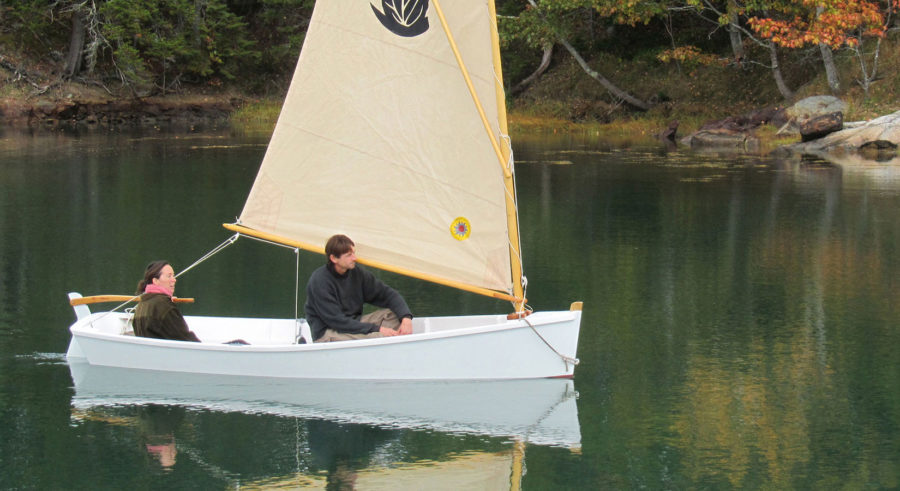
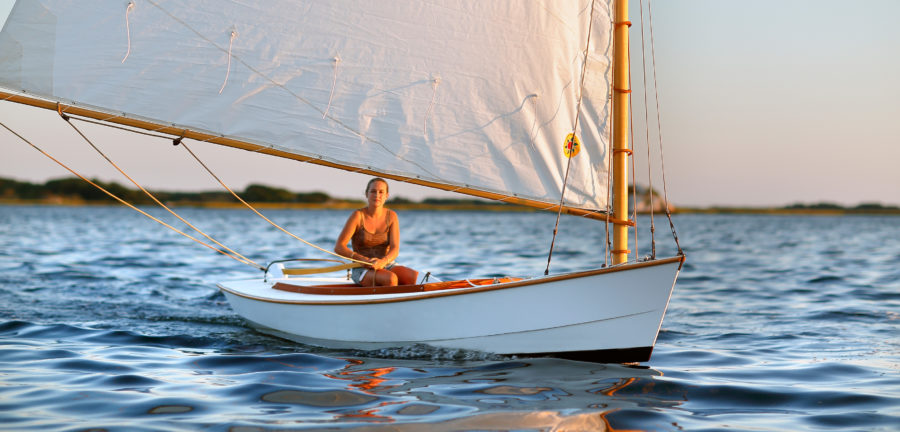
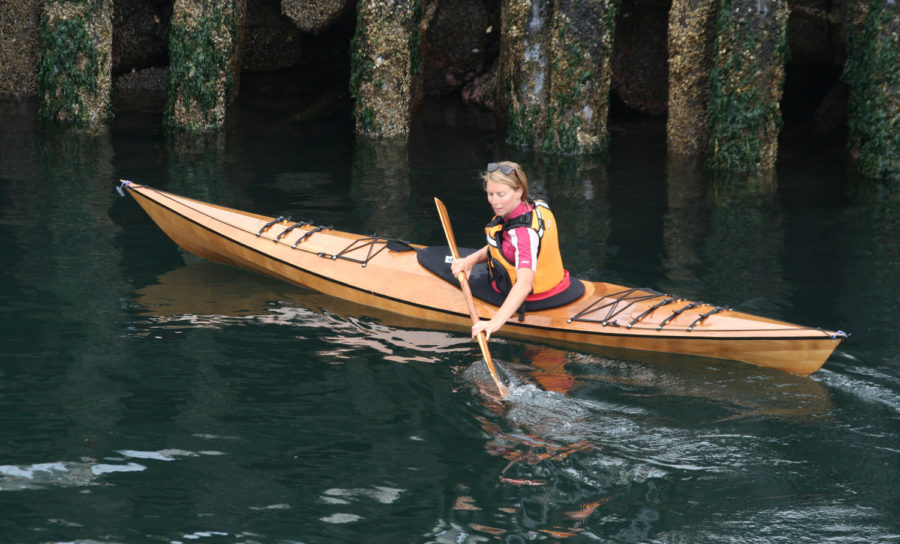
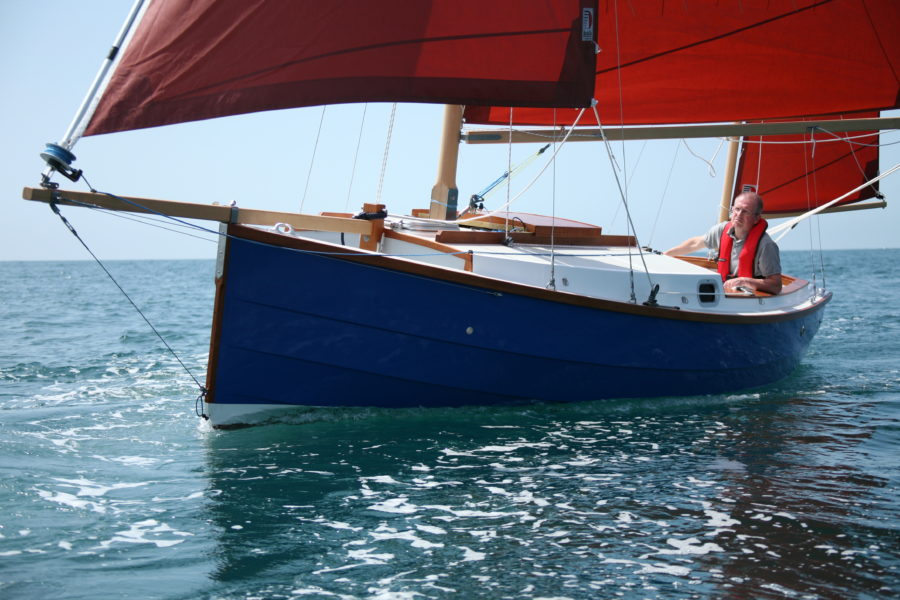
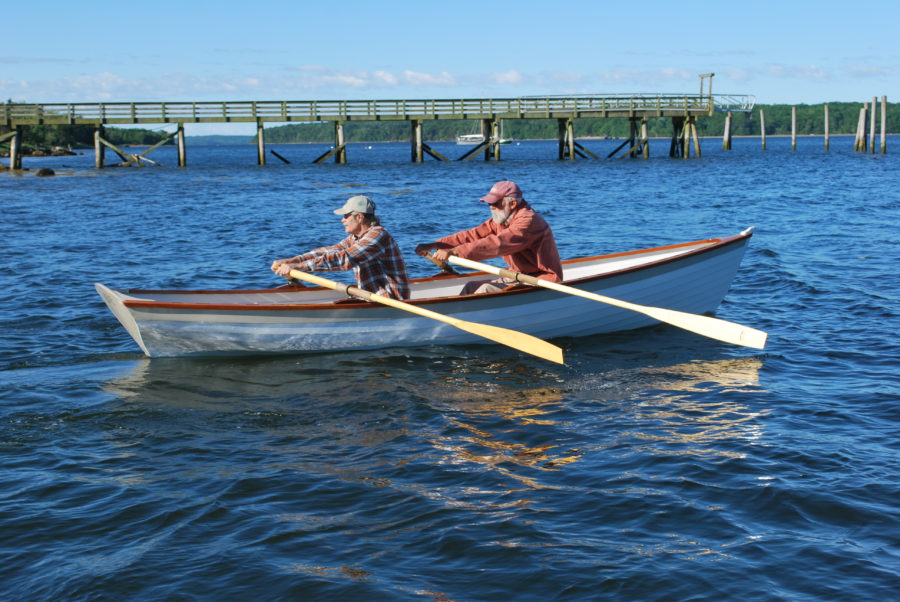
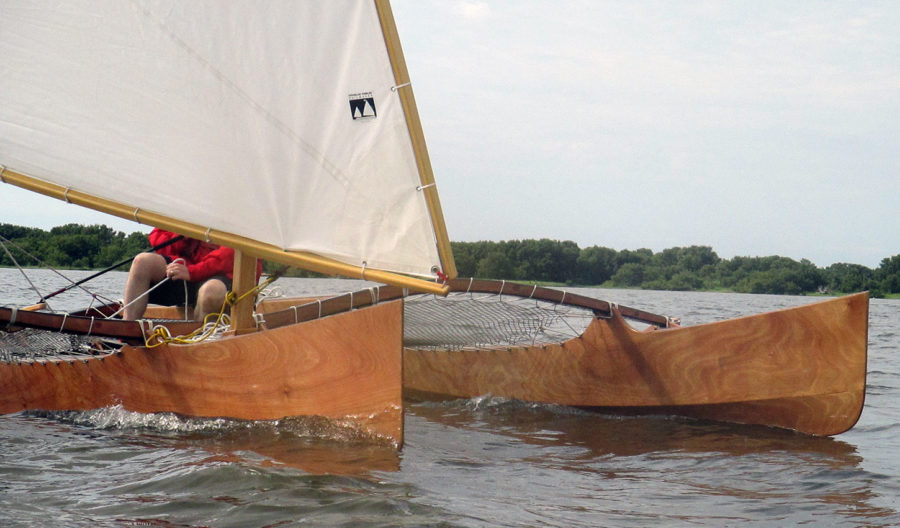
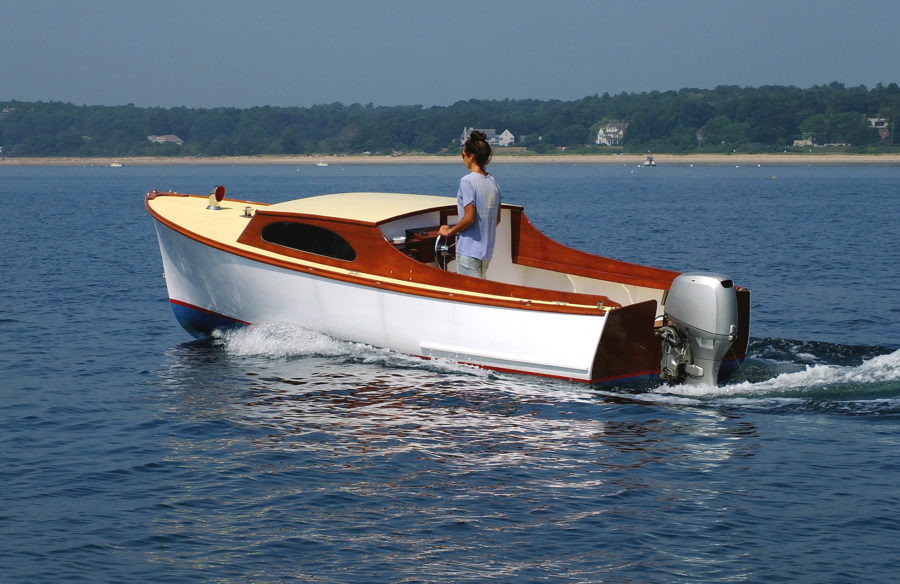
Join The Conversation
We welcome your comments about this article. If you’d like to include a photo or a video with your comment, please email the file or link.